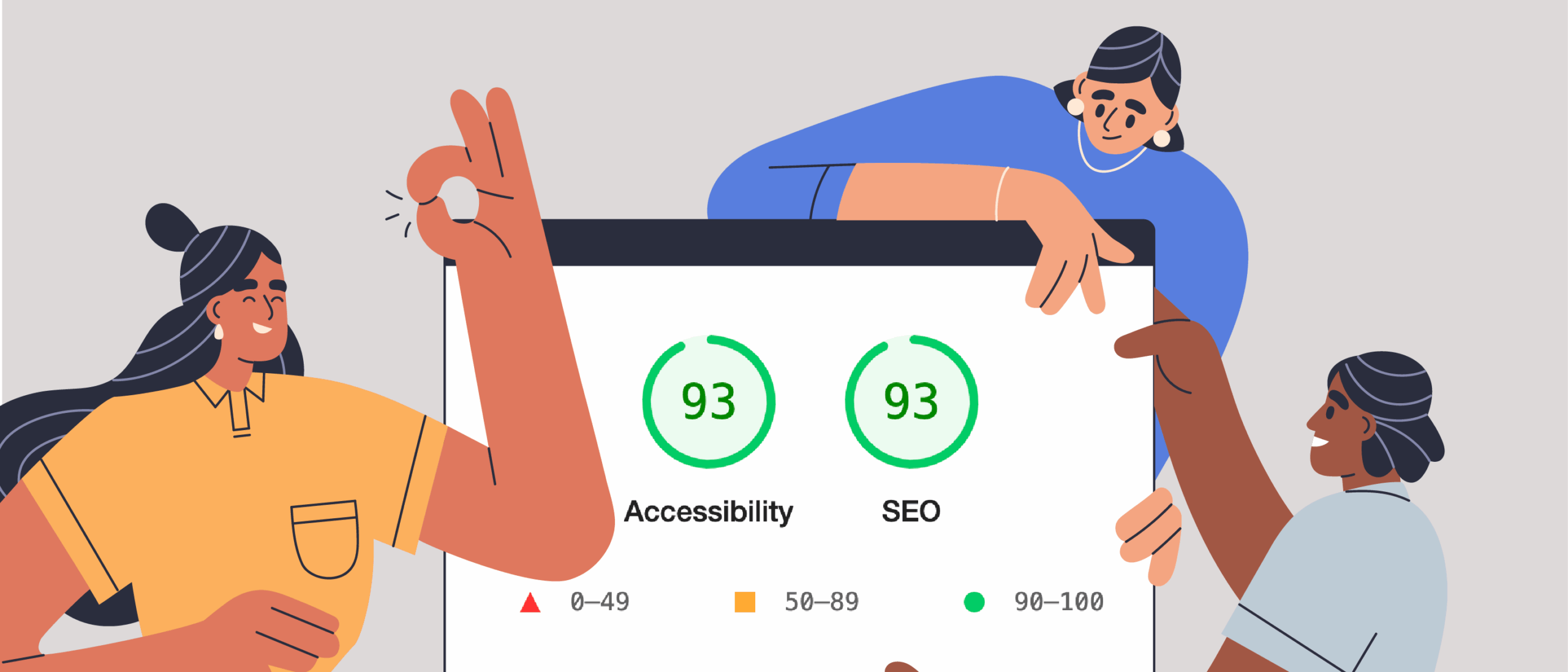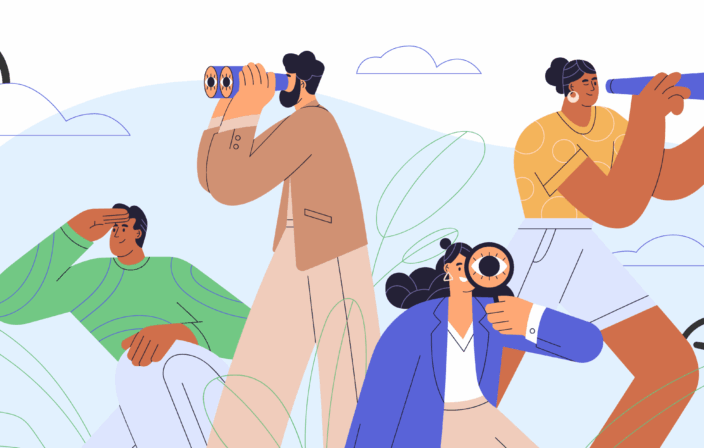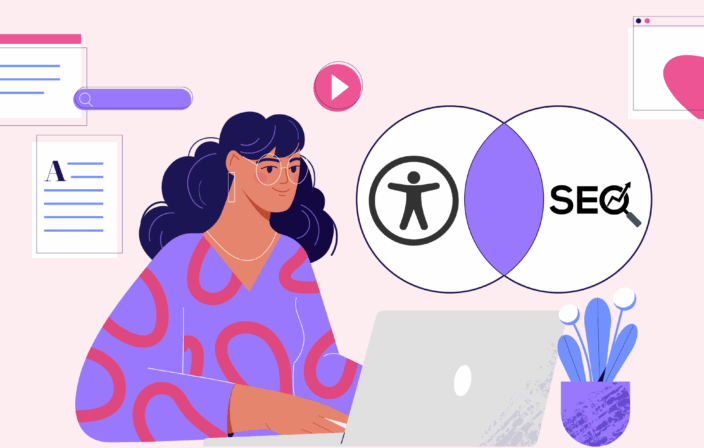Welcome to a 4-part blog series about Accessibility (“A11Y” for short – because there are eleven characters between the ‘A’ and the ‘Y’) and its interconnection with search engine optimization (SEO). In this series, Matthew Luken from Deque Systems and Patrick Hathaway from Sitebulb will write complementary articles on the subject from their unique points of view.
As technologies advance, they start to intersect, merge and embed themselves across our digital lives. A unique mobile app feature quickly becomes commonplace across many mobile apps, then websites, and then into other technologies and services. In some cases, the advances are excessive. Do we really need BlueTooth-enabled soda dispensers at the movie theater?
Similarly, when we think about search engine rankings, we see that usability and user experience now affect those rankings. There is a larger message here; usability and accessibility go hand-in-hand. Is it such a stretch to think that accessibility will also affect SEO and rankings?
As of this writing, there is no comprehensive accessibility ranking factor. However, the clear relationship between usability, user experience, and accessibility suggests that accessibility metrics will have a significant influence on search engine algorithms in the near future.
The Ultimate Goal of the Internet
One of the internet’s original goals was to provide digital equality for all users; disability is one of the factors in a very long list. Many years on, we see dribs and drabs of success with digital equality and accessibility.
However, in an arc toward the positive, we also see tons of new technologies that have greatly contributed to digital access, as well as the emergence of regulations to motivate digital property designers, developers, and owners to move more quickly in the correct direction. Add to that Google’s mission of ensuring that “everyone should be able to access the web,” it becomes easier and easier to believe that there is a clear and logical path laid before us.
Being Both Functional and Accessible Creates a World of Good
As digital professionals, we know that there are many different ways to build digital properties. Often, there is only sufficient bandwidth to “band-aid” something enough to get it working. Sadly, a website could be just barely functional through spaghetti code and prayer, but to the user who only cares about ‘I want’ and ‘I have’, it doesn’t matter what’s making it all run.
Digital purveyors have often created monsters built on shaky foundations–because they had to. We know that taking the time to build a strong foundation that’s resilient, flexible, and can scale is expensive and time-consuming. Teams too often take the penny-wise/pound-foolish approach to deliver a minimally viable product (MVP). In some circles, this is considered “agile”. But rework and/or technical debt increases costs, time, and, more importantly, contributes to spaghetti code. It is possible for code to be functional and accessible from the outset and still support agile development; at Deque we call this Shift Left.
Accessibility is a Core Part of User Experience
When things are simple, they tend to be more accessible. When things are more usable, they also tend to be more accessible. Every textbook and college instructor will tell you that usability is the hallmark of great user experiences. Therefore, there is clear cause and effect; accessibility is a core part of UX. Perhaps it’s less Dr. Doolittle’s Pushmi-Pullyu than what we perceive at first blush.
Good for Accessibility and SEO–It Can be Both
When companies build something semantically and invest in making something that is accessible as part of a strong foundation, they find that certain problems, defects and/or accessibility violations never appear. There are many strong examples available (which we will explore later in the series) where we can see that an accessible digital product has supported or solved many SEO concerns from the outset. What is good for accessibility will set the foundation for good SEO–and vice versa.
Design and Build Things Better from the Outset
The assertion now becomes: the company that takes the time to build something thoughtfully and well, will build it once; it will be functional, desirable, and accessible with robust SEO.
When shortcuts are taken–or digital teams only focus on a single aspect of a problem–digital products will never wholly deliver on their potential and none of us want to build an inferior product.
As a digital professional, this is why you should care and why you should build your digital property thoughtfully with the proper approach. It’s more cost-effective and you will have a better and stronger product, but most importantly, your product will stand head and shoulders above your competitors and be usable by its full market–not just some of the market.
What’s the Scale of the Problem? Erm, I mean Opportunity?!?!
There are over 1.85 billion adults living with a disability globally–that’s 15% of the world population according to the World Bank–or 1 in 7 people. In the United States, the number is even higher: 61 million adult Americans–1 in 4 adults (or 25% for those that don’t want to do the math)– are living with a daily disability. When you add the friends and family of people with disabilities – people who care deeply about accessibility – that number jumps to a staggering 73%. Can your product afford to ignore 73% of the available market? When users do most of their research online before ever talking to you, can you risk not having your product show up at the top of the search results?
There are concrete overlaps between accessibility and SEO that we will showcase in the future parts of this blog series. Up next we will talk about how technology works to lay the foundation of cause & effect. Stay tuned…and don’t forget to also read Patrick’s counterpart article over on Sitebulb!
About Sitebulb
Sitebulb is a website auditing and SEO tool that provides comprehensive crawl analysis and presents recommendations that guide your audit workflow with intuitive next steps, from investigation to reporting. In-depth explanations of every issue help you fully understand the results and have confidence in your recommendations, which makes Sitebulb a great fit for digital marketers who regularly need to do website audits.
Patrick Hathaway is a Director at Sitebulb, where most of his time is spent trying to help Sitebulb’s users to make best use of the wealth of data that the software uncovers. As part of this ongoing mission, he has written an entire library of ‘Learn More’ guides for the 300+ issues that Sitebulb flags, explaining both why a particular problem is worth your attention, and how to go about fixing it. Common feedback from digital agency owners is that this works as an extremely effective training ground for more junior recruits.




